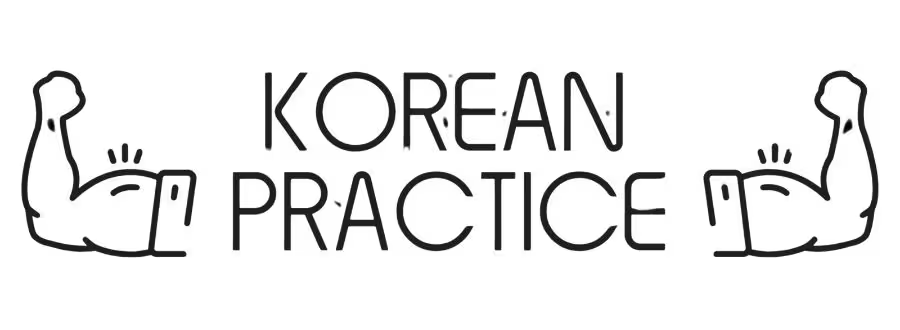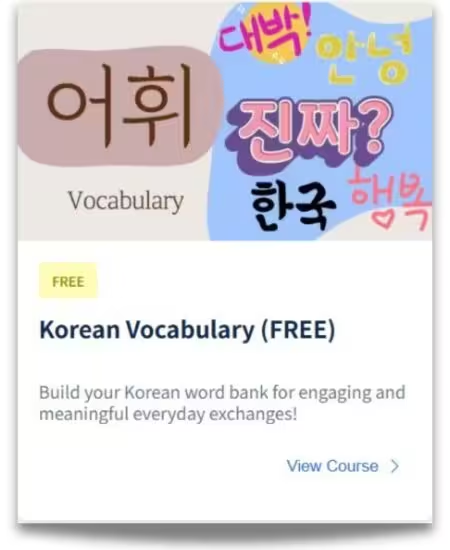Table of Contents
Why Learn How to Introduce Yourself in Korean
- Knowing how to introduce yourself in Korean is crucial for learning the language and understanding Korean culture. If you’re interested in Korean language and culture or planning a trip to Korea, learning how to introduce yourself in Korean with proper pronunciation is the first step.
- In this guide, I’ll provide a step-by-step process for how to introduce yourself in Korean, including essential phrases and basic grammar. Even if you’re just learning to say annyeonghaseyo in Korean, this guide will help you make a great first impression.
Basic Korean Grammar for Introducing Yourself
- To learn how to introduce yourself in Korean, it’s crucial to understand Basic Korean Grammar for Introducing Yourself. In Korean language, the word order follows subject-object-verb (SOV), which differs from English. For a proper self-introduction in Korean formal settings, here are some essential sentence structures to keep in mind:
- Example: 제 이름은 [Name]입니다. My name is [Name]. Learning how to introduce yourself in Korean pronunciation correctly is key to being understood.
Example
Original Korean Sentence
제 이름은 제인입니다.
Pronunciation Guide
제 (je) 이르믄 (i-reu-meun) 제이님니다 (je-i-nim-ni-da).
Meaning and Context
제 (my; in a humble way) 이름 (name) 은 (my topic is my name) 제인 (Jane) 입니다 (is; I’m telling you formally).
English Translation
My name is Jane.

- Example: 저는 [Nationality] 사람입니다. I am from [Nationality].
Example
Original Korean Sentence
저는 멕시코 사람입니다.
Pronunciation Guide
저는 (jeo-neun) 멕시코 (mek-si-ko) 사람임니다 (sa-ram-im-ni-da).
Meaning and Context
저 (I; in a humble way) 는 (I’m going to talk about me) 멕시코 (Mexico) 사람 (person) 입니다 (am; I’m telling you formally).
English Translation
I am from Mexico.
Literal Translation
I am Mexico person.

Want to learn Korean in a simple and structured way, just like this? My courses break down grammar step by step, making Korean easy to understand. Plus, you can try free sample lessons. Ready to start?
Step-by-Step Guide on How to Introduce Yourself in Korean
Now that you have a basic understanding of Korean grammar, let’s dive into the step-by-step process for how to introduce yourself in Korean with name and other personal details.
Greetings
- The first step is to greet the person you’re introducing yourself to. The most common greeting in Korean is 안녕하세요 (annyeonghaseyo in Korean), which means “hello.” Other common greetings include 안녕 (annyeong), which is less formal, and 반갑습니다 (bangapseubnida), which means “nice to meet you” and is commonly used in formal situations.
- It’s important to note that the level of formality used in the greeting should match the level of familiarity and social status of the person you’re speaking with. For a self-introduction in Korean formal settings, always use the polite form.
Example
Original Korean Sentence
안녕하세요, 반갑습니다.
Pronunciation Guide
안녕하세요 (an-nyeong-ha-se-yo), 반갑슴니다 (ban-gap-seum-ni-da).
Meaning and Context
안녕하세요 (hello; in a polite way), 반갑 (to be glad) 습니다 (am; I’m telling you formally).
English Translation
Hello, nice to meet you.
Literal Translation
Hello, (I)’m glad.
Your Name
After exchanging greetings, the next step is to learn how to Introduce yourself in Korean by stating your name. In Korean, you can say “제 이름은 [Name]입니다” (je ireumeun [Name]imnida), which translates to “My name is [Name].” It’s essential to use appropriate honorifics while introducing yourself to someone who is older or of higher status.
Example
Original Korean Sentence
안녕하세요, 제 이름은 존입니다. 만나서 반갑습니다.
Pronunciation Guide
안녕하세요 (an-nyeong-ha-se-yo), 제 (je) 이르믄 (i-reu-meun) 존임니다 (jon-im-ni-da). 만나서 (man-na-seo) 반갑슴니다 (ban-gap-seum-ni-da).
Meaning and Context
안녕하세요 (hello; in a polite way), 제 (my; in a humble way) 이름 (name) 은 (my topic is my name) 존 (John) 입니다 (is; I’m telling you formally). 만나 (to meet) 아서 (because) 반갑 (to be glad) 습니다 (am; I’m telling you formally). * 만나 + 아서 = 만나서
English Translation
Hello, my name is John. Nice to meet you.
Literal Translation
Hello, my name is John. (I)’m glad because (I) meet (you).
Nationality
After introducing yourself by name, the next step in how to introduce yourself in Korean is to mention your nationality by saying “저는 [Nationality] 사람입니다” (jeoneun [Nationality]saramimnida), which translates to “I am from [Nationality].” This can help the other person understand your background and origin.
Example
Original Korean Sentence
안녕하세요, 제 이름은 John이고 저는 미국 사람입니다.
Pronunciation Guide
안녕하세요 (an-nyeong-ha-se-yo), 제 (je) 이름은 (i-reu-meun) 존이고 (jo-ni-go) 저는 (jeo-neun) 미국 (mi-guk) 사람입니다 (sa-ram-im-ni-da).
Meaning and Context
안녕하세요 (hi; in a polite way), 제 (my; in a humbe way) 이름 (name) 은 (my topic is my name) 존 (John) 이고 (and) 저 (I; in a humble way) 는 (my topic is myself) 미국 (the United States) 사람 (person) 입니다 (am; I’m telling you formally).
English Translation
Hi, my name is John and I’m from the United States.
Literal Translation
Hi, my name is John and I’m United States person.
Occupation
Next, you can mention your occupation by saying “제 직업은 [Occupation]입니다” (je jigeobeun [Occupation]imnida), which means “My occupation is [Occupation].” This can help the other person understand what you do for a living and can provide a conversation starter.
Example
Original Korean Sentence
제 직업은 선생님입니다.
Pronunciation Guide
제 (je) 지거븐 (ji-geo-beun) 선생님임니다 (seon-saeng-nim-im-ni-da).
Meaning and Context
제 (my; in a humble way) 직업 (occupation) 은 (my topic is my occupaton) 선생님 (teacher) 입니다 (is; I’m telling you formally).
English Translation
My occupation is a teacher.
Literal Translation
My occupation is teacher.
Example
Original Korean Sentence
저는 엔지니어로 일합니다.
Pronunciation Guide
저는 (jeo-neun) 엔지니어로 (en-ji-ni-eo-ro) 일함니다 (il-ham-ni-da).
Meaning and Context
저 (I; in a humble way) 는 (my topic is myself) 엔지니어 (engineer) 로 (as) 일하 (to work) ㅂ니다 (I’m telling you formally).
English Translation
I work as an engineer.
Literal Translation
I work as engineer.
Hobbies and Interests
Lastly, you can mention your hobbies and interests by saying “제 취미는 [Hobby]입니다” (je chuimineun [Hobby]imnida), which means “My hobby is [Hobby].” This can help the other person get to know you better and can provide topics for further conversation.
Example
Original Korean Sentence
제 취미는 독서입니다.
Pronunciation Guide
제 (je) 취미는 (chwi-mi-neun) 독서입니다 (dok-sseo-im-ni-da).
Meaning and Context
제 (my; in a humbe way) 취미 (hobby) 는 (my topic is my hobby) 독서 (reading) 입니다 (is; I’m telling you formally).
English Translation
My hobby is reading.
Example
Original Korean Sentence
제 취미는 등산입니다.
Pronunciation Guide
제 (je) 취미는 (chwi-mi-neun) 등사님니다 (deung-sa-nim-ni-da).
Meaning and Context
제 (my; in a humble way) 취미 (hobby) 는 (my topic is my hobby) 등산 (hiking) 입니다 (is; I’m telling you formally).
English Translation
My hobby is hiking.
Common Mistakes to Avoid When Introducing Yourself in Korean
When learning how to introduce yourself in Korean, it can be nerve-wracking, particularly if you are not a native speaker. However, with adequate preparation and practice of how to introduce yourself in Korean pronunciation, you can confidently introduce yourself and avoid common mistakes. In this article, we will discuss some common mistakes to avoid when introducing yourself in Korean and provide tips on how to introduce yourself in Korean effectively, starting with the proper way to say “annyeonghaseyo” in Korean.
Using Formal Language
- One common mistake to avoid when learning Korean introducing Yourself in Korean is using informal language with someone who deserves formal language.
- In Korean culture, formal language is a way to show respect to those who are older or of higher status.
- For instance, when introducing yourself to a professor or a boss, it is crucial to use formal language to show respect. Failing to do so may result in the other person feeling disrespected or offended.
Forgetting to Use Honorifics
- When learning How to Introduce Yourself in Korea, another mistake to avoid is forgetting to use honorifics when addressing someone older or of higher status.
- Honorifics are a way to show respect to those who are of a higher age or status. Failing to use honorifics can come across as rude or disrespectful.
- For instance, instead of saying “What is your name?” to an older person, it is better to use the honorific form “What is your respected name?” or “What is your honorable name?” to show respect.
Mispronouncing Words or Using Incorrect Grammar
- Mispronouncing words or using incorrect grammar can also be a common mistake when introducing yourself in Korean.
- Korean pronunciation and grammar can be challenging for non-native speakers.
- However, making an effort to learn proper pronunciation and grammar can go a long way in making a good impression.
- You can practice by listening to Korean speakers or taking a Korean language class.
Being Too Verbose or Using Complicated Sentences
- When introducing yourself in Korean, it’s important to keep your sentences clear and concise.
- Being too verbose or using complicated sentences can make it difficult for the other person to understand you. Keep your self-introduction in Korean formal yet simple and to the point.
- For example, instead of saying “I am a student who is currently studying Korean language and culture at a university in Seoul,” you could say “I am a student studying Korean in Seoul.” Learning how to introduce yourself in Korean with name and basic information is more important than complex sentences.
Conclusion: Mastering How to Introduce Yourself in Korean
Learning how to introduce yourself in Korean can be a fantastic way to connect with Korean speakers and understand their culture. Remember to use proper honorifics and show respect when addressing someone. Regularly practicing your Korean language skills, especially your annyeonghaseyo in Korean pronunciation, can also help you improve. With these tips and a bit of practice, you will be able to confidently and fluently introduce yourself in Korean with name and other personal details in both casual and self-introduction in Korean formal contexts.
Sign up for my newsletter and get
📖 Korean short stories
🎧 Listening practice with audio
❓ Vocabulary and grammar quizzes
🎁 Free courses
📝 Blog updates
– all delivered straight to your inbox!










